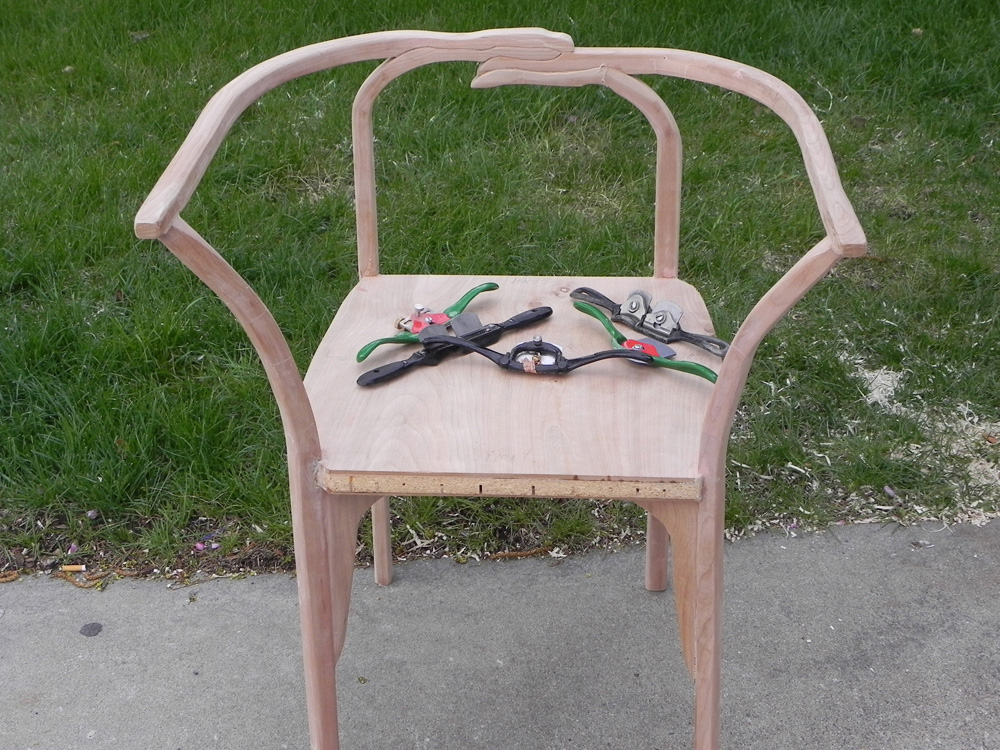
The Spokeshave: The Most Unappreciated
Tool in your Toolbox
by Andrew Sawyer
Chanhassen, MN
Click on any picture to see a larger version.
The most underappreciated, and underused tool in my shop is the spokeshave. I have five of them. The first one I had was a very frustrating tool to use, until I tuned it up. It was a Kunz round bottom spokeshave with which I had terrible results. I had no idea what pleasure and versatility was hiding behind a good tune up. In general terms, a spokeshave is a really versatile hand plane with 2 handles and a great amount of manueverability.

First I'll tell you about the different types of spokeshaves I have in my shop, and how I use them. Then I will cover how to tune them up.
I have 5 spokeshaves of 4 different types. The first one is an adjustable mouth flat bottom stanley #52.

This one has a lot of different uses. The flat bottom determines its use on outside curve and flat surfaces, and the adjustable mouth allows me to take thick and thin shavings. In fact, once it is tuned up and the blade is positioned properly, the mouth opening is the only adjustment necessary to control the amount of stock removed. If I were to compare it to another tool I own it would be a low angle block plane.
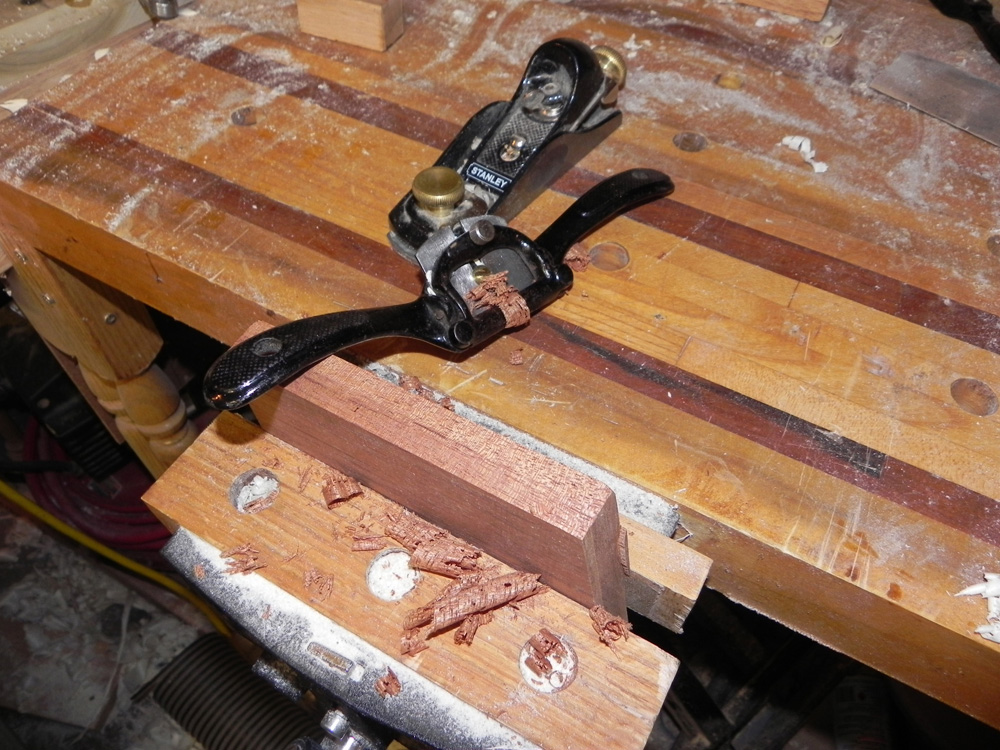
Next I have the Kunz #51 round bottom spoke shave. This one has a great adjustment system for the blade: just loosen the cap iron a little and turn the 2 knurled top screws to raise and lower the blade.

The round bottom allows it to follow along inside curves.
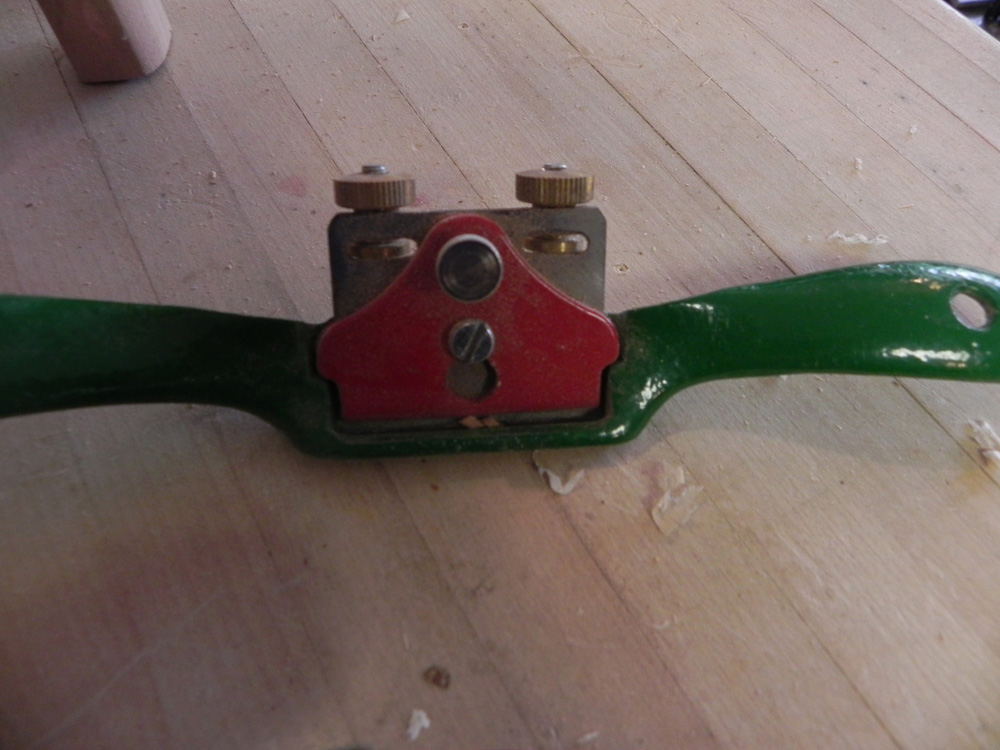
Although I have to say this spoke shave requires the most practice...it is truly a skill to move this along a curve and keep the sole in contact with the woods surface along the whole path. But with any skill, practice is paramount.
The tool that I think this spokeshave most resembles is my Stanley 113.
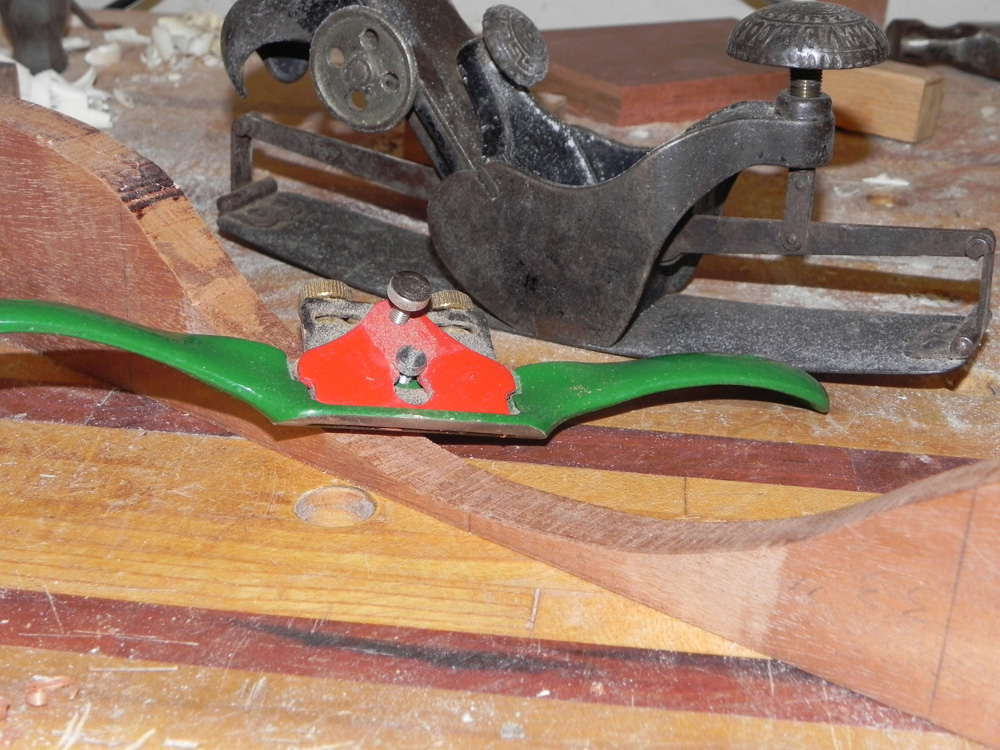
Next I have a Kunz Convex Spokeshave.
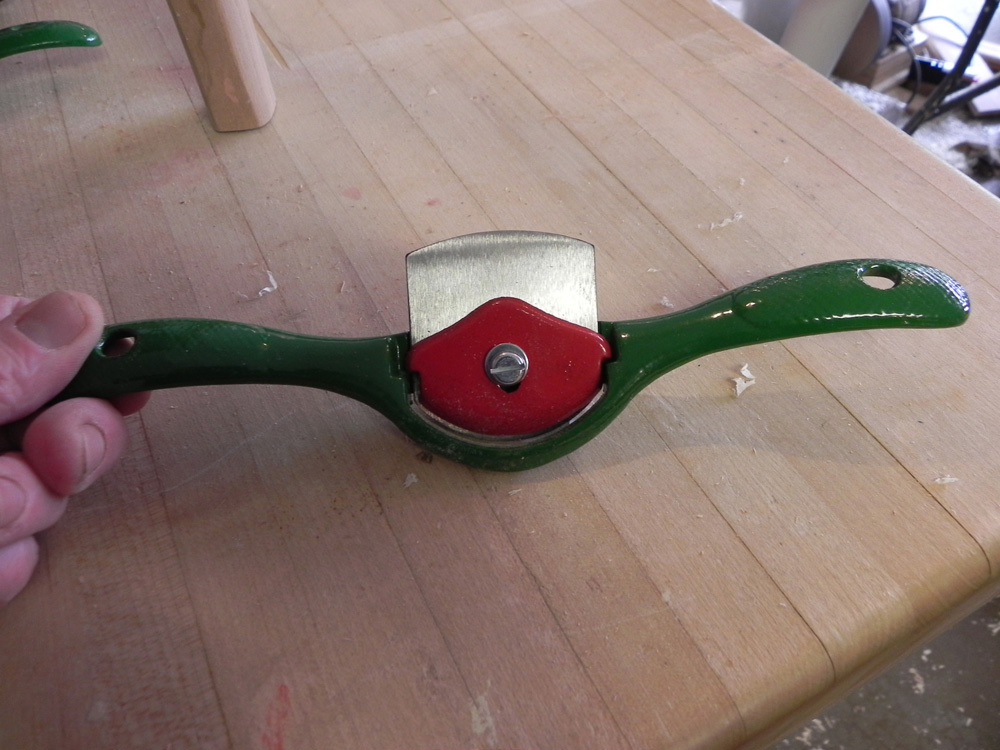
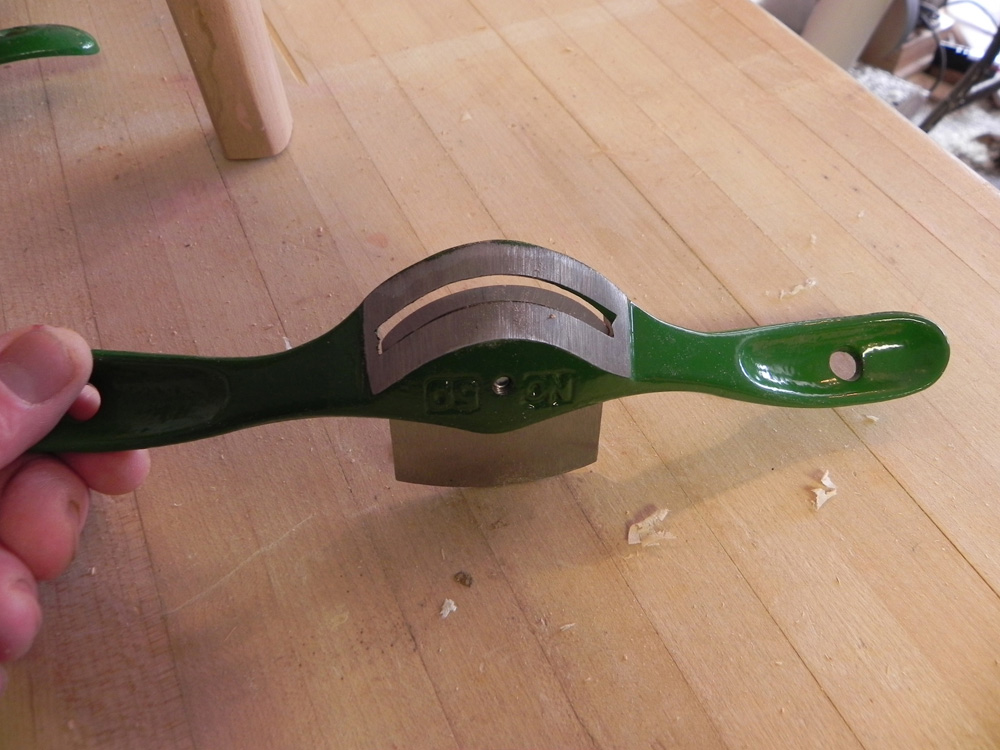
This is the one I am going to demonstrate the tune up on, since it is brand new. I am going to use this spokeshave to help shape a seat for a chair I am building for my daughter. This is a great spokeshave for hollowing out; in fact its usage is the most similar to a carving gouge.
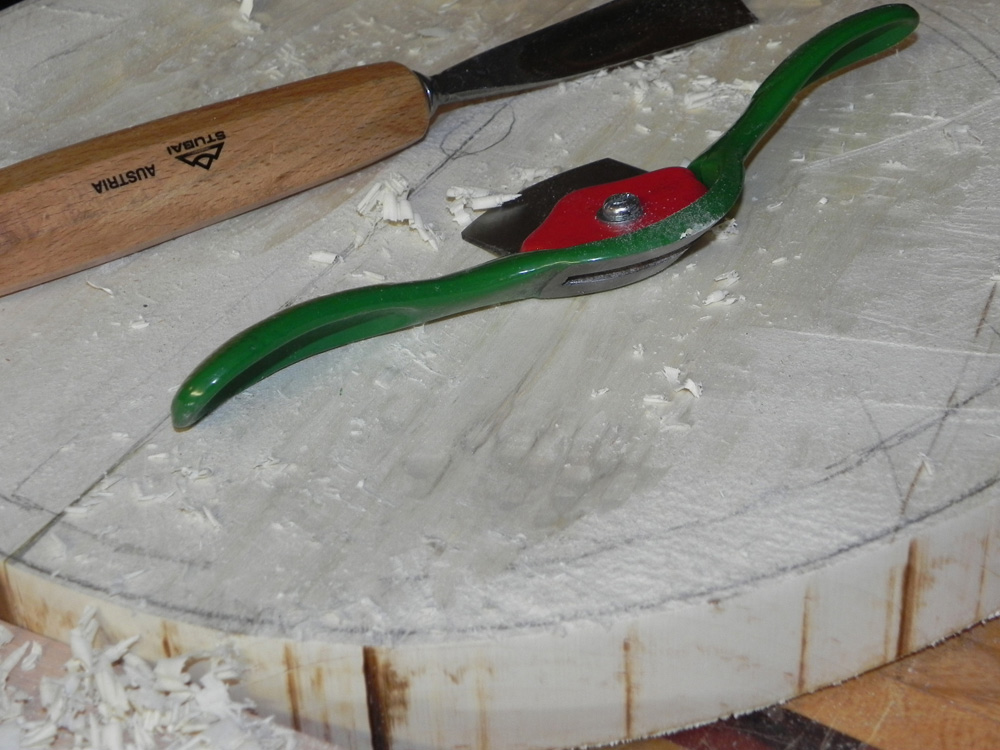
The last style that I have is a combination flat sole and concave spoke shave. I have 2 of these: one Stanley #60, and one unknown brand from Germany.
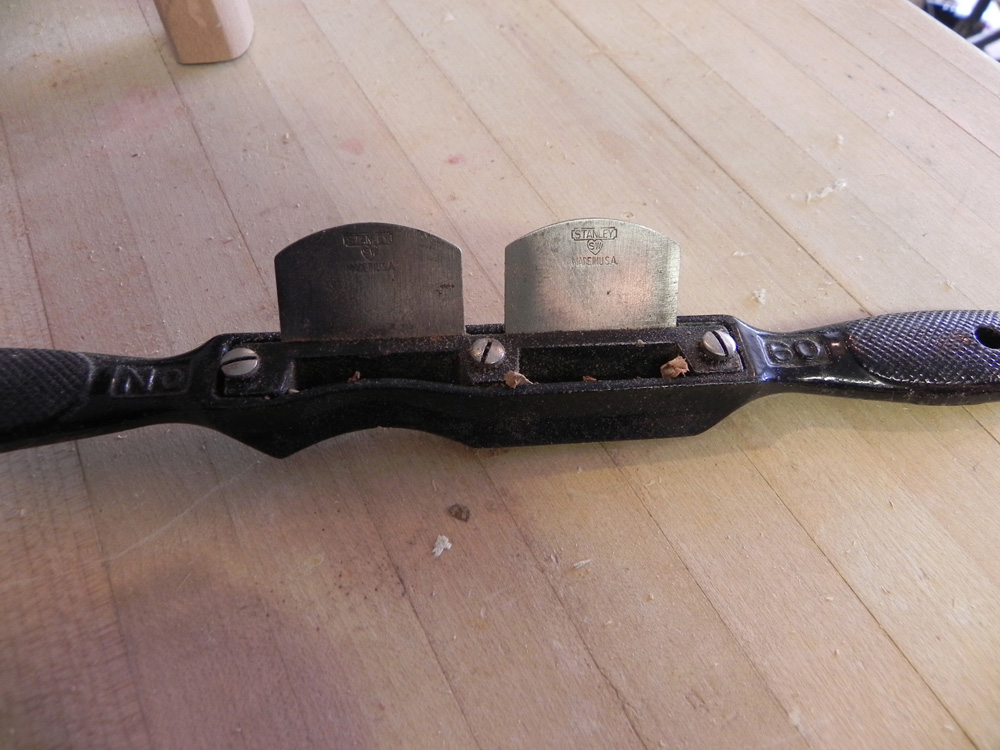
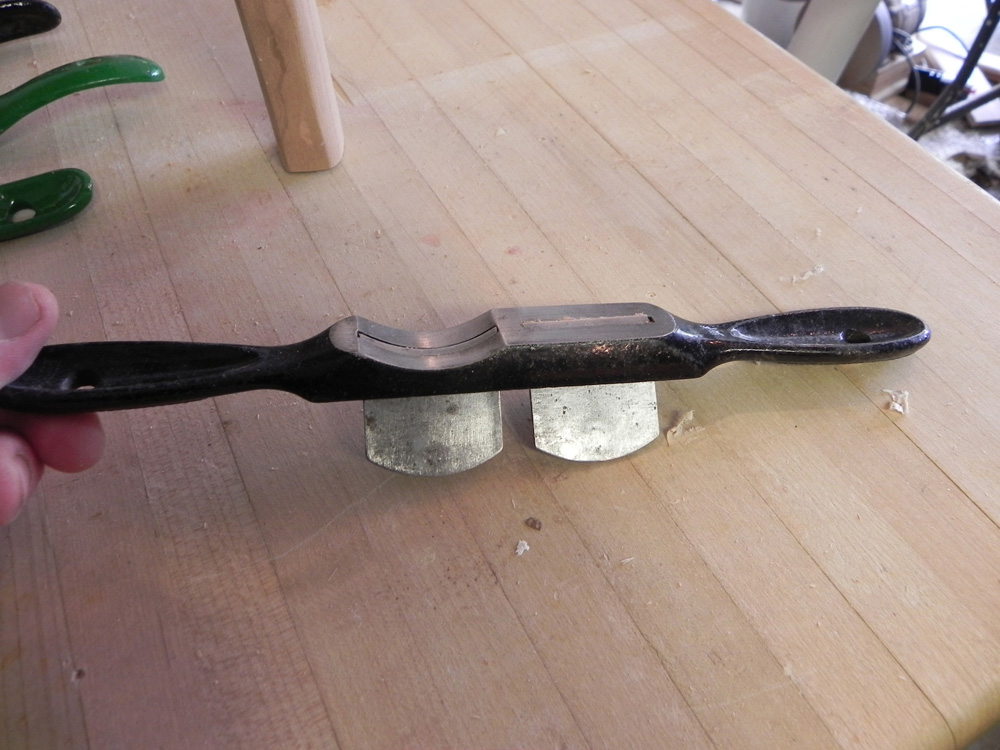
Since I have already covered the flat sole, I will focus on the concave side. Its sole is flat, so it doesn't fare well on the inside of curves, but it will uniformly round square edges or make spindles quite nicely, and remarkably efficiently. There are 2 tools that I think this spokeshave resembles: a spindle gouge on a lathe, and a bullnose or roundover router bit.
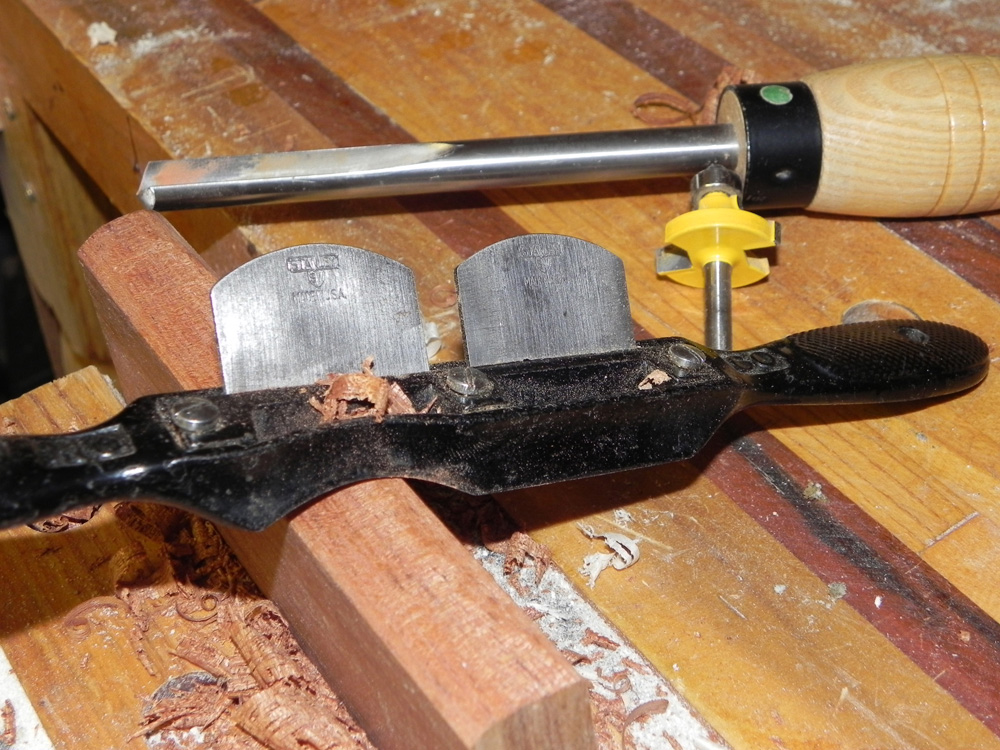
So now we want to make these puppies sing: tune up time! Everything about this is similar to tuning up a handplane.
These are all the parts for the Kunz #50.
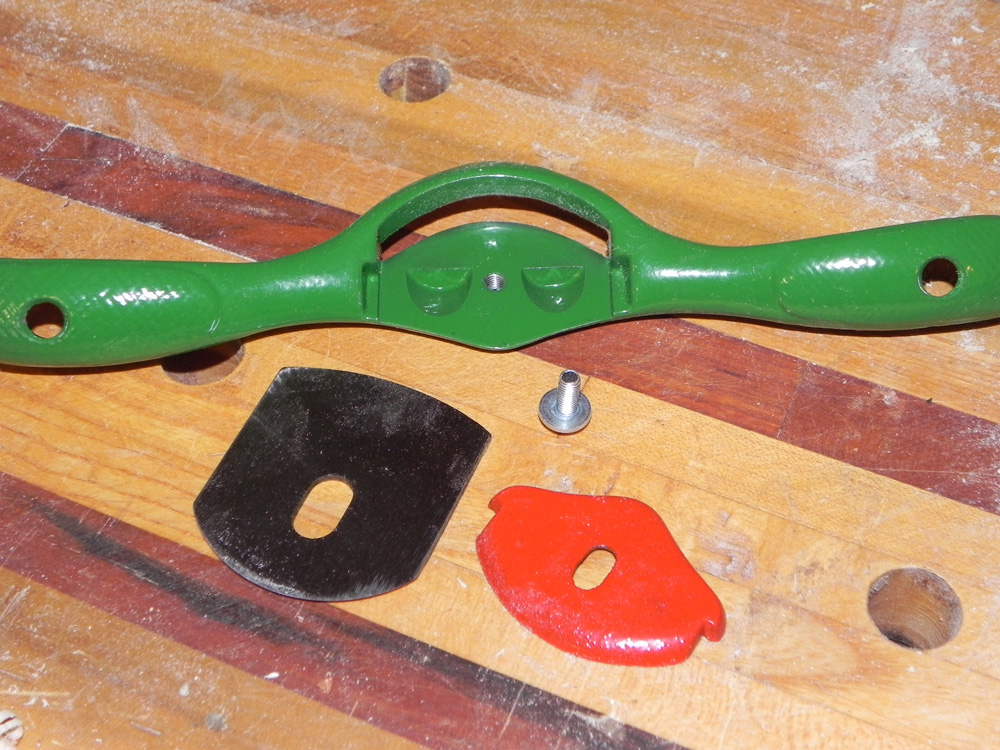
First step is to sharpen the blade, which is done by first flattening the back of the blade. Start by scribbling the blade with a permanant marker and then laying it on a flat sharpening stone and rubbing it back and forth. Work through the grits until you have a nicely polished flat blade, and check that the marker is gone. Now we repeat the process with the bevel of the blade maintaining complete contact between the bevel and the stone, so as not to round over the edge. Most spokeshaves require a bevel angle of about 25 degrees.
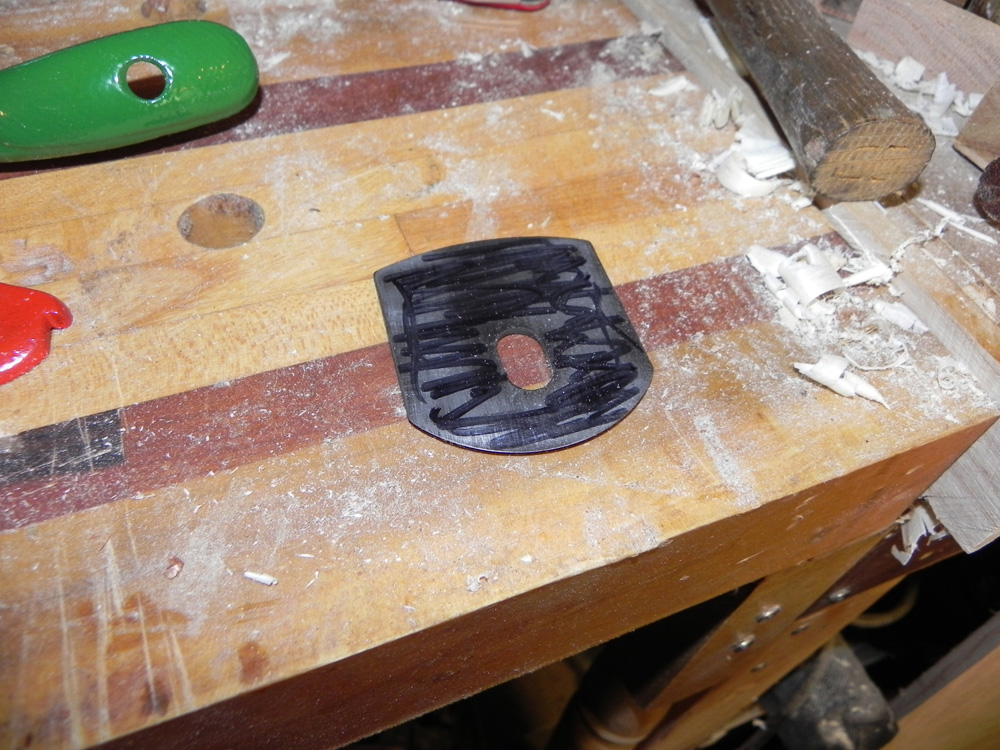
Step two is flattening the cap iron. This can be done on the stone, but first you will want to remove any paint with a file, so your stones don't get clogged with paint.
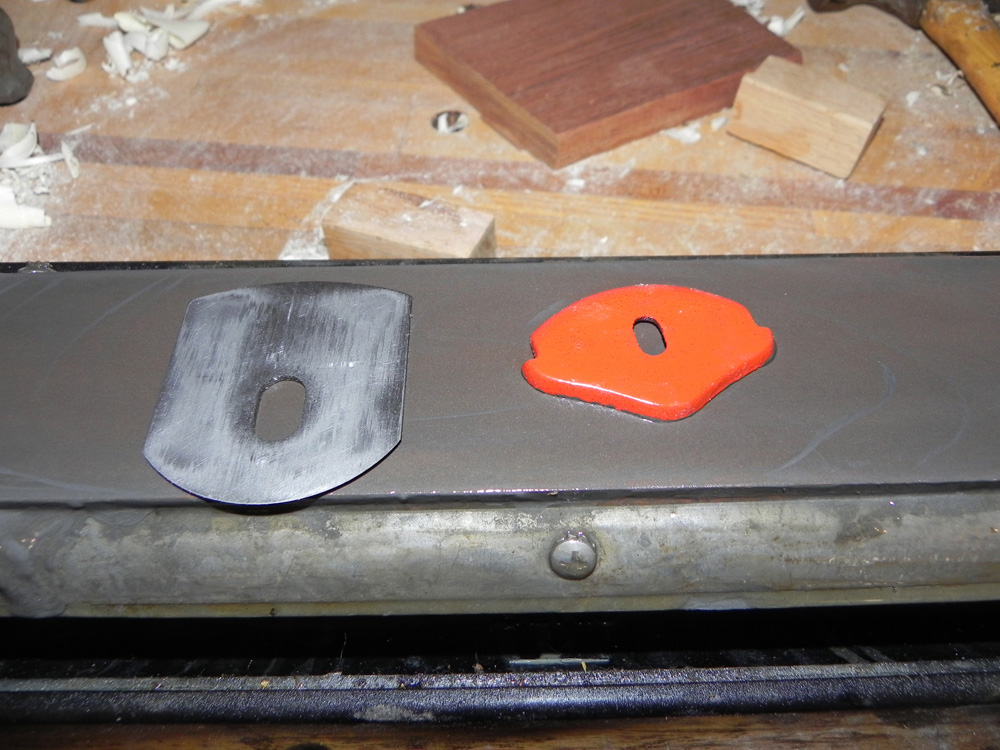
The third step is to clean up the the blade bed, or the contact spot for the blade. On a plane this would be the frog.
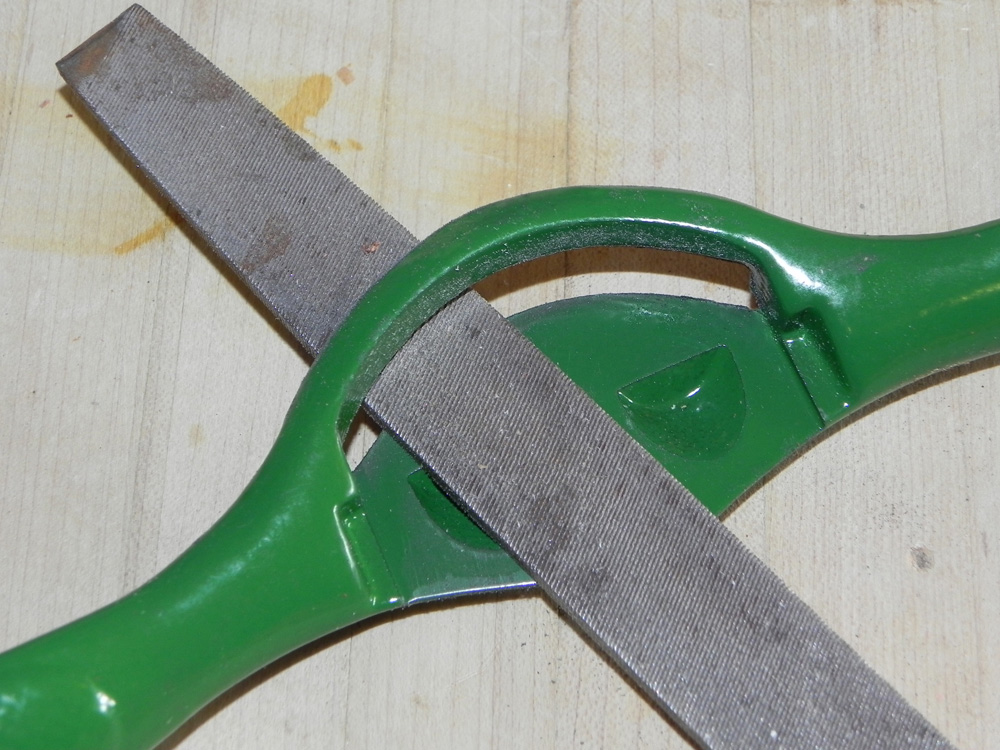
You will need a flat file to go in and flatten this space, removing and milling burrs and excess paint to create an absolute flat seat for the blade to rest in. This will help reduce the amount of chatter and tearout during use.
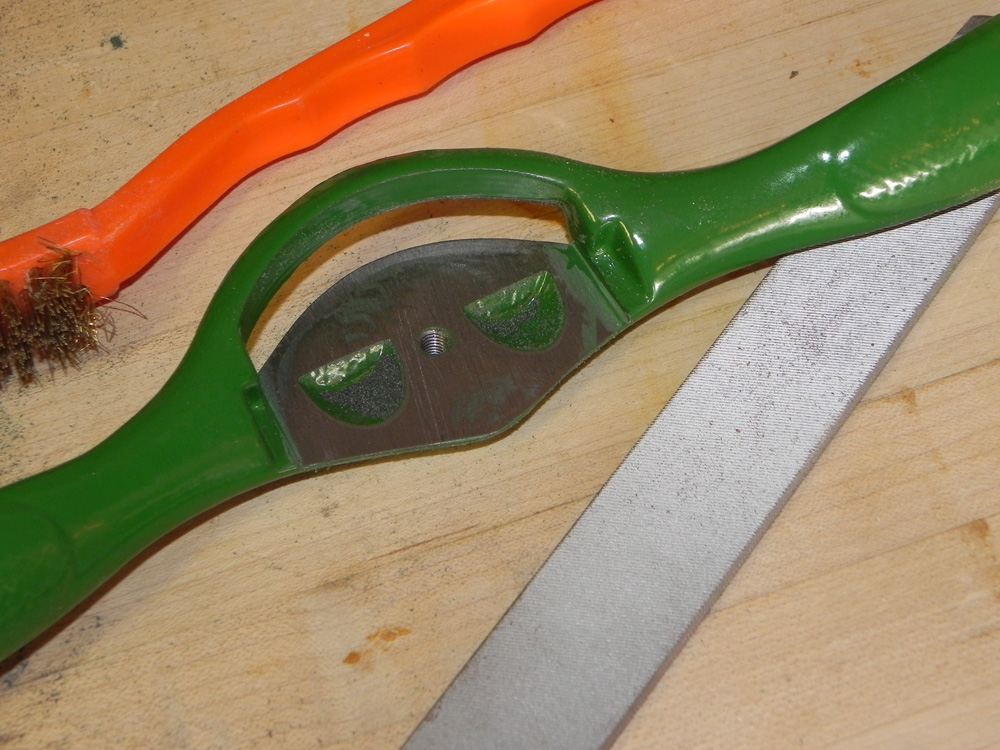
The fourth step is to start to either flatten the sole or smooth a round sole. This process is different with all of the styles of spokeshave I have described. The concave is the most different and requires a round (rattail) file. I rub the file back and forth (up the hill, down the hill, across the valley, up the hill) across the sole. It is best to only file as little as needs to be removed to make the sole flat and smooth. Any change in the shape of the sole will need to be made to the blade too.
The other 3 styles of soles can can be smoothed or flattened on a set of flat stones. The process is the same for the flat sole as for flattening the back of the blade. The round bottom sole simply needs to be rubbed back and forth, while rotating moving the contact point from the front to the back so a flat spot does not develop. The convex shape is just the opposite - you will want to move the sole sideways, or better yet hold the spokeshave in a wood vise and move the stone side to side to flatten the sole.
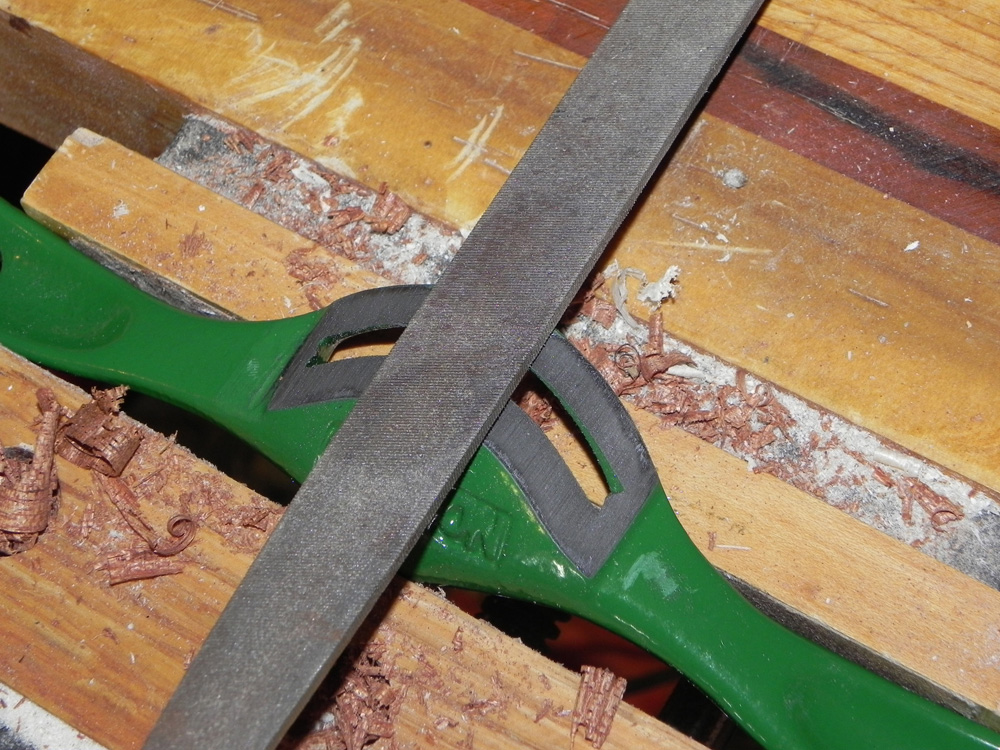
Step 5 is tune up the cap iron so the shoulders fit firmly into its notches. This will involve removing any excess metal or paint from the notches themselves, then cleaning up the shoulders of the cap iron. The last step may be to elongate the screw slot in the cap iron to allow it to slip down into the proper place. This allows for all of the parts to fit together snugly, support each other the way they should, and reduce vibration by acting as one unit.

Now reassemble the spokeshave: tighten the screw on the cap iron enough that there is pressure on the blade but adjustments can be made. It is best to set the blade so that it is too shallow to cut and then advance it little by little by tapping the top of the blade with a little brass hammer, or I like a screwdriver handle. Give it a test drive and make adjustments if necessary. A well tuned spokeshave is a joy to use, but technique is just as important. Just like a handplane, when possible you should operate the spokeshave at a slight angle to get the smoothest cut. It is ever so crucial to keep the sole in constant contact with the surface being worked on. Honestly this is far easier with a hand plane, but your practice will be rewarded with gorgeous shavings and a very smooth surface left behind.
CLICK HERE to find out more and shop Spokeshaves at Highland Woodworking.
Andrew can be reached directly via email at
andrewasawyer@msn.com
.
Return to
Wood News
front page
